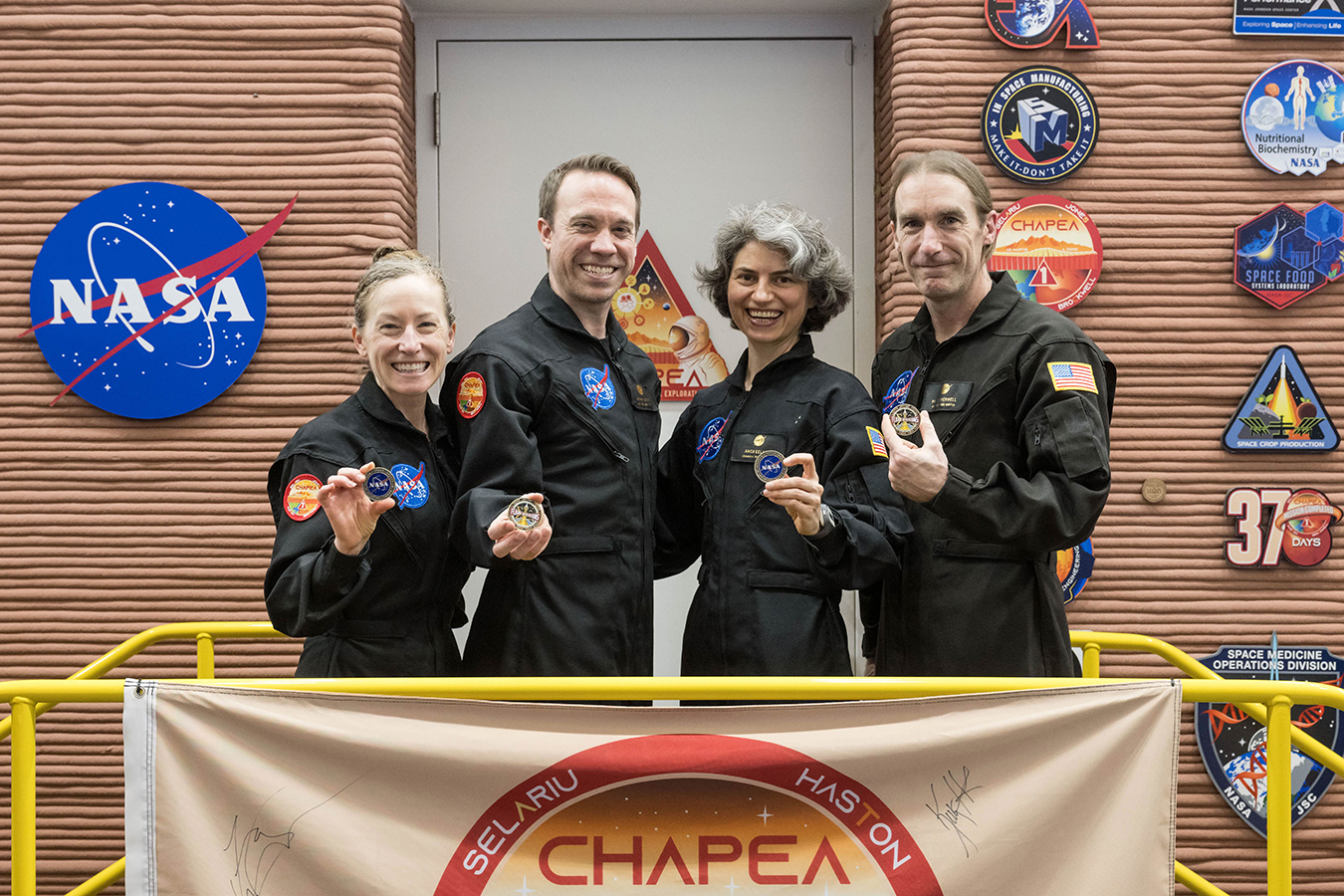Stay Up to Date
Submit your email address to receive the latest industry and Aerospace America news.
The Life Sciences and Systems Technical Committee advances technologies required to keep people healthy and safe as they explore space.
In July, the four-person crew of NASA’s Crew Health and Performance Exploration Analog, CHAPEA emerged from their 160-square-meter habitat at NASA’s Johnson Space Center in Texas. During their 378 days in self-sufficient isolation meant to simulate a year on the surface of Mars, the all-volunteer crew grew their own food and suited up for simulated surface operations. Their Mars Dune Alpha habitat, a 3D-printed facility, was constructed by Austin-based ICON Technology.
Such long-duration analog missions are the basis of research for fields as diverse as space architecture, space medicine and space psychology, because they allow researchers to study the performance of small, multisex teams living for months or years in isolated, extreme environments. To study the effects of communication delays between Earth and Mars, CHAPEA mission controllers restricted external communications by enforcing a time delay of up to 22 minutes. At the emergence ceremony, NASA astronaut and Deputy Director of Flight Operations Kjell Lindgren said that the CHAPEA crew “committed a year of their lives in service to NASA, the country, and humanity’s exploration of space.”
On the International Space Station, spacesuit issues continued to challenge EVAs, extravehicular operations. A June spacewalk was aborted when NASA astronaut Tracy Dyson reported a water leak in the servicing and cooling umbilical of her Collins Aerospace-built suit as she was preparing to exit the airlock. The leak sprayed ice crystals throughout the airlock in a “snowstorm,” as described by fellow astronaut Suni Williams, who observed through the inner hatch’s window. Similar leaks occurred in 2013, 2015, 2022 and 2023, and multiple cases resulted in water collecting inside the astronaut’s helmet. European Space Agency astronaut Luca Parmitano experienced this water collection during two spacewalks.
An additional challenge arose on the ground. NASA in June announced that it and Collins Aerospace agreed to end a task order under which Collins was to develop new suits for the remaining years of ISS operations. The order had also required Collins to deliver a suit for an on-orbit flight demonstration in 2026, but the company “recognized that its development schedule would not support the space station’s schedule and NASA’s mission objectives,” NASA said in a news release. This leaves Axiom Space of Texas as the sole contractor under NASA’s Exploration Extravehicular Activity Services program.
Axiom reported progress with its lunar surface suit, including an unoccupied water submersion test in April at the Neutral Buoyancy Laboratory in Houston. Also, in early June, an Axiom Space employee and a NASA astronaut donned spacesuits and entered a pressurized mockup of a SpaceX Starship lander. Plans call for a Starship to ferry astronauts from lunar orbit to the lunar south pole in the Artemis III landing. Axiom also has a task order from NASA to create a variant of its spacesuit for spacewalks on ISS and future commercial space stations.
Meanwhile, in September, billionaire Jared Isaacman and SpaceX engineer Sarah Gillis donned SpaceX’s new extravehicular suits during their Polaris Dawn flight. They took turns partially exiting the Crew Dragon capsule for “stand-up EVAs” that resembled some of those performed during the early Apollo flights. And in October, China unveiled a moonwalking version of its Feitan suit, which taikonauts will wear during the nation’s first crewed moon landing, scheduled to occur before 2030.
Stay Up to Date
Submit your email address to receive the latest industry and Aerospace America news.




